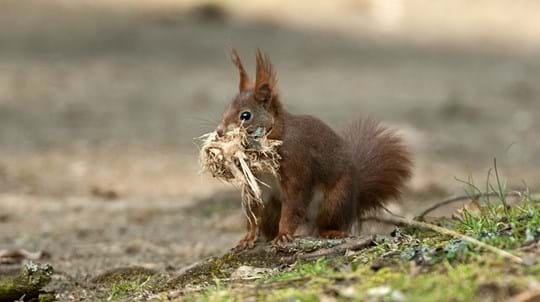
Credit: Anne-Marie Kalus / WTML
What do red squirrels eat?
Red squirrels rely on trees for food, with their diet mainly made up of seeds and nuts. Pine seeds are a particular favourite, but they will also take hazelnuts, and the seeds of larch and spruce. Also eaten are fruit, tree shoots, bark, lichen and fungi. Young birds and eggs may be taken, but this is rare. In autumn, squirrels will bury seeds and nuts, ready to be eaten in winter when food is scarce.










